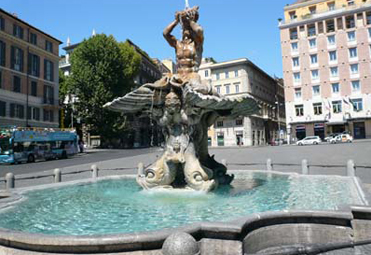Furphey and Scuttlebutt

Does anyone else feel the demise of the drinking fountain, a.k.a. ‘the bubbler’, as a great loss to our society?
Since time immemorial, water used to bring people together – a bit like beer or wine does in the typical Australian society these days! Hence the use of colloquialisms like “furpheys” and “scuttlebutts” to describe the rumours and gossip that spread when people congregated for casual discussion around water sources.
The ‘Furphey’, these days known as a fictional or inflated story, was originally a water cart built by the Furphey Foundry in Shepparton, Victoria used to carry much needed water across the sands of the Middle East along with news from afar, often from doubtful sources or brightened up a little. The Furphey Foundry still operates to this day.
Scuttlebutt, which in slang means rumour or gossip, came from the nautical term for the cask used to serve water on a sailing ship. It’s derived from a butt (cask) which had been scuttled by making a hole in it so the water could be withdrawn. Since sailors exchanged gossip when they gathered at the scuttlebutt for a drink of water, scuttlebutt became Navy slang for gossip or rumours.
More than 2000 years ago, way before furpheys and scuttlebutts, the Romans provided drinking water through 39 monumental fountains and 591 public basins, like the Fontana del Tritone (1642).
The Roman consul was named ‘curator aquarum’ or ‘guardian of the water’. I don’t know about you, but I could hang around for a chat at a place like this!
The first Bubbler was developed in 1889 by Kohler Water Works which still operates in Kohler, Wisconsin. While a guy called Harlan Huckleby is credited with the actual design, it was Kohler who patented it and trademarked the name. The original Bubbler shot water one inch straight into the air, creating a bubbling texture, and the excess water ran back down over the sides of the nozzle. It was several years later before the Bubbler adopted the arc projection, which may have allowed the drinker to partake more easily, or was perceived to be more sanitary.
The bubbler concept took off and there were many copies. Since the name was trademarked, other companies named their fountains "The Gurgler" and "The Gusher".
In Australia, the City of Sydney created Water, water every where: a virtual historical exhibition...which takes a closer look at the history of the city’s water features and the use of water changes over time.
J. H. Maiden, Director of the Royal Botanic Gardens to the 1909 Royal Commission on Improving Sydney, said way back then that “Every street in Sydney should have its drinking-fountain. It should be at least as easy to obtain a drink of pure water as a glass of milk or beer. Sydney is a sub-tropical city, and sometimes it is warm and sometimes it is dusty … Sydney should be a city of fountains.”

(Image courtesy National Library of Australia: Little girls at water bubbler in Hyde Park, Sydney, 1930s)
But over the years we seem to have lost a lot of our bubblers with governments citing vandalism and water scarcity as some of the reasons why.
An article in Brisbane recently caused community outrage when it was revealed that Queensland Rail was in the process of removing bubblers from stations because “they were a target for vandalism and anti-social behaviour and also a public health hazard if misused”. Instead, QR was giving away free bottles of water to people who knew about this arrangement and managed to track down a QR employee to obtain a bottle. The ban was subsequently scrapped by the Minister for Transport and Main Roads.
The Federal Government recently announced plans to trial water bubblers in five central Australia communities in an effort to reduce soft drink consumption with high sugar drinks blamed for diabetes and dental disease.
Research by the Bottled Water Alliance showed the following findings about water bubblers in Australia:
- Over 78% percent of people believe there are not enough bubblers available to the public.
- 90% do not know where their local water bubblers are, and do not believe they are easy to find.
- 85% are concerned about the safety or cleanliness of public bubblers.
- 66% said that if greater number and quality of bubblers were available, they would buy less bottled water.
What about your towns and cities? We would like to hear about the bubblers in your regions – let’s see if we can track down the oldest bubbler in Queensland! Send us some photos or any information of existing bubblers, and also let us know where you think your region needs more bubblers.
Back to list